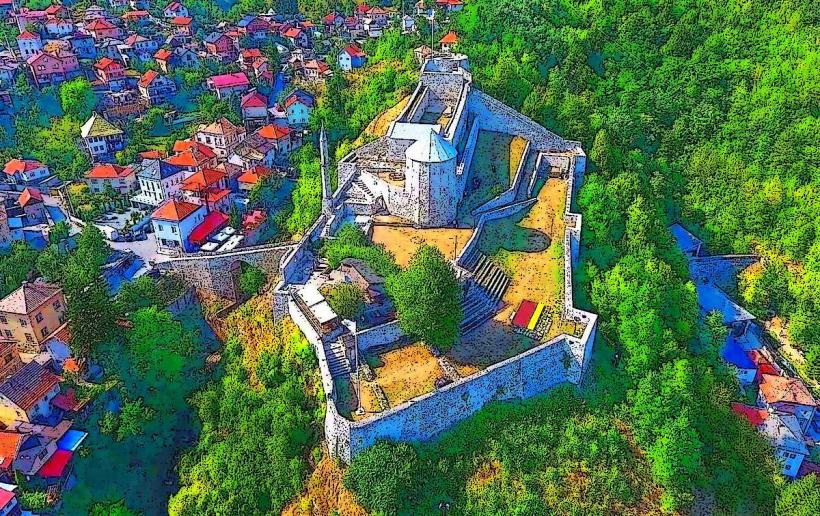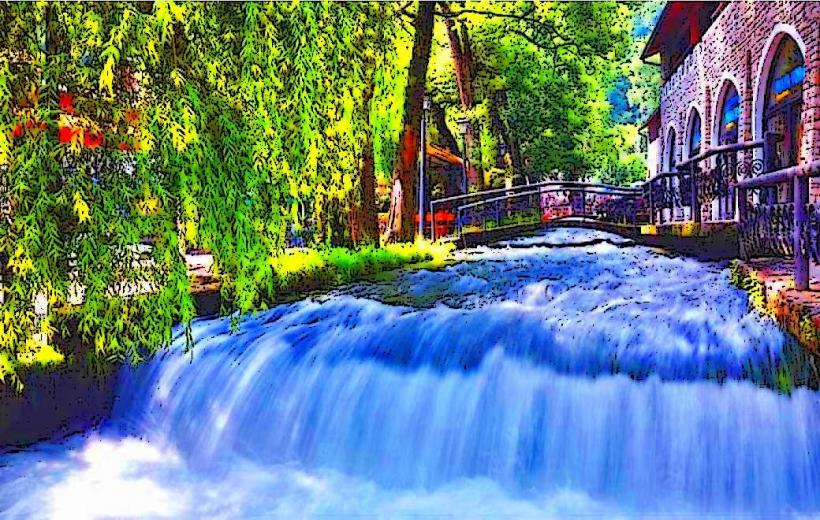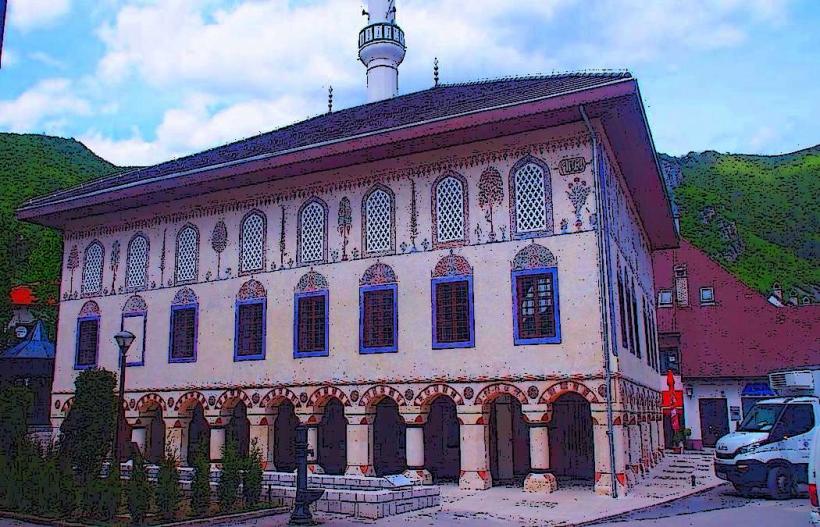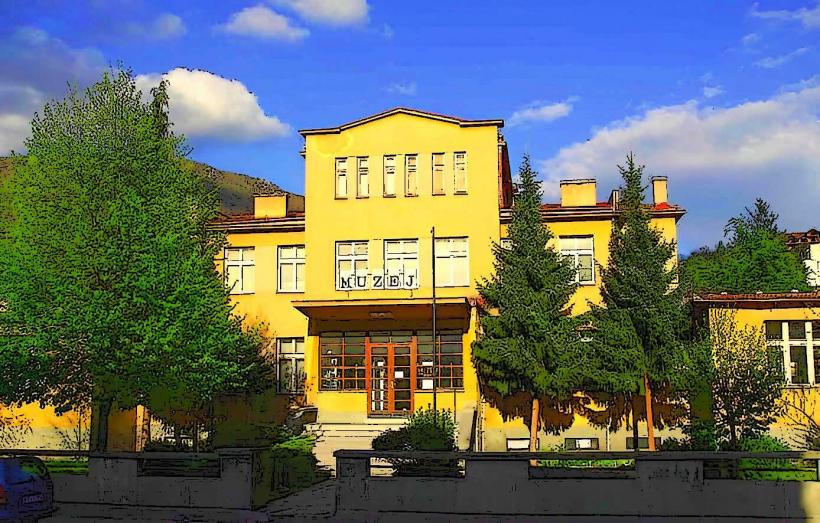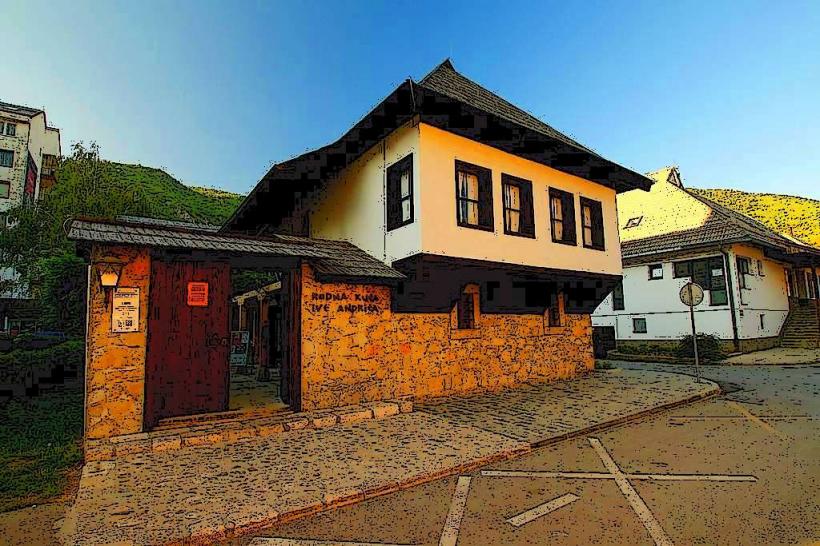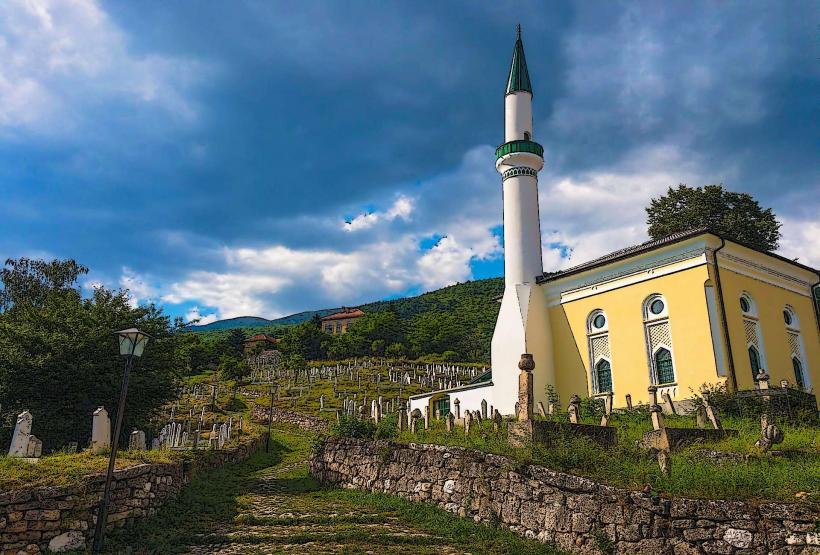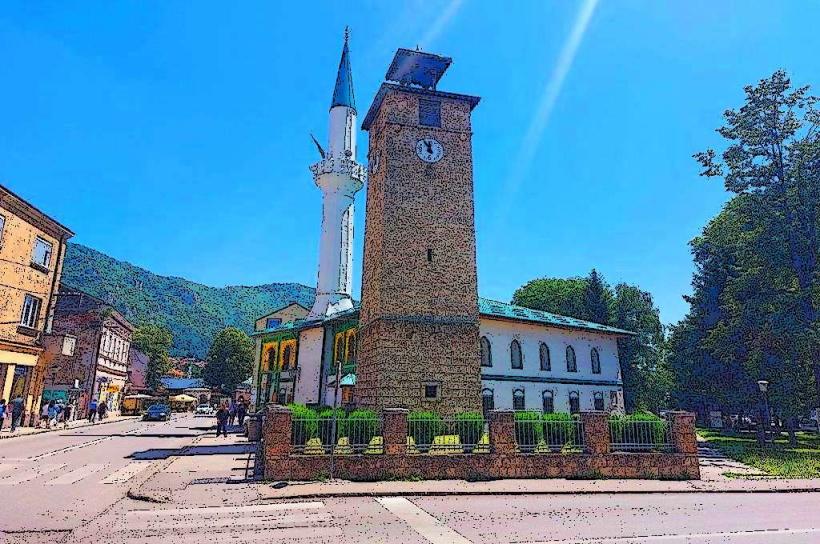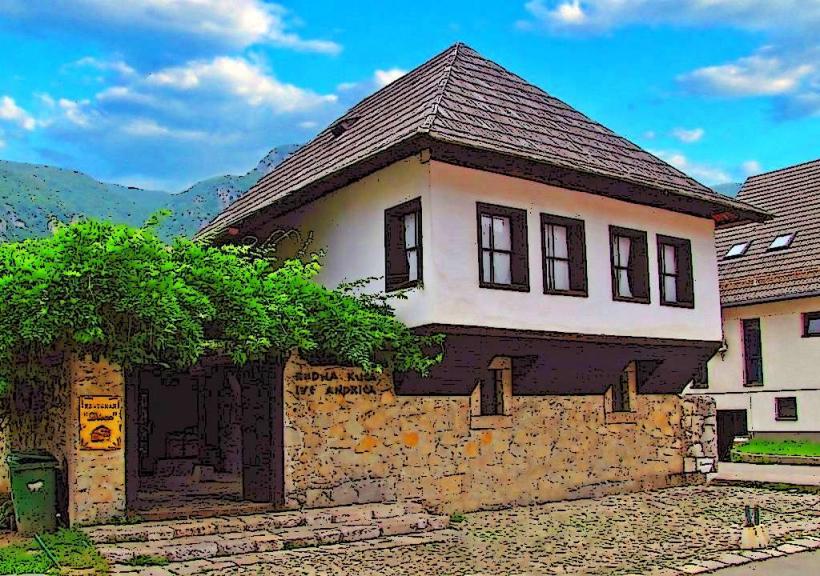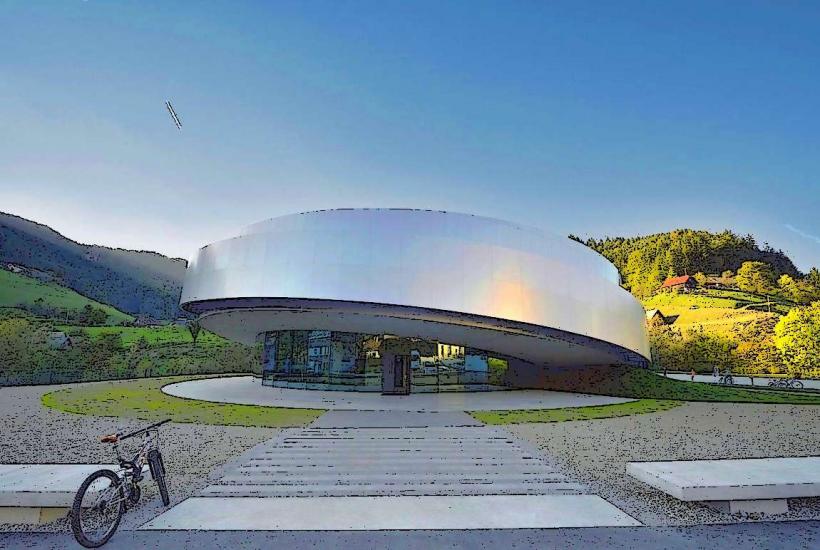Information
Landmark: Stari Grad (Old Town)City: Travnik
Country: Bosnia and Herzegovina
Continent: Europe
Stari Grad (Old Town) in Travnik, Bosnia and Herzegovina, is the historic heart of the town, showcasing its rich Ottoman heritage and playing a key role in the development of the region throughout history. The area is characterized by its preserved Ottoman architecture, narrow streets, and cultural landmarks, making it a fascinating destination for history enthusiasts and tourists interested in experiencing the town's past.
Overview of Stari Grad (Old Town)
Location:
- Stari Grad is located in the center of Travnik, situated on the southern slope of a hill. The town's old core offers scenic views of the surrounding mountains and valleys, creating a picturesque setting that has attracted visitors for centuries.
- The old town is accessible by walking through its quaint streets, lined with traditional Ottoman-style buildings, including mosques, shops, and historical homes.
Historical Significance:
- Stari Grad is the site where Travnik developed as a major center during the Ottoman era. It was the capital of the Ottoman province of Bosnia from 1699 to 1850 and housed Ottoman administrators, merchants, and elite residents. The town grew significantly during this period, and the architecture reflects the influence of the Ottoman Empire.
- The region has been inhabited for centuries, with the earliest traces of settlement going back to Roman times. However, much of the historical significance of Stari Grad is tied to the Ottoman rule.
Key Features of Stari Grad (Old Town)
Ottoman Architecture:
- Stari Grad is renowned for its Ottoman-style architecture, with buildings constructed using stone and wood, typical of the period. The narrow, cobbled streets add to the charm of the area, and traditional Ottoman houses with wooden balconies are common sights.
- Notable Ottoman structures in the area include mosques, public fountains, and homes built to accommodate the needs of both the elite and common citizens.
Cultural and Social Heritage:
- The old town is home to various historical public buildings, including caravansaries (traditional inns for travelers) and baths (hammams). These structures provide insight into the daily life of the Ottoman period and how the town functioned as a central hub for commerce and administration.
- Stari Grad also includes several important cultural landmarks, such as the Travnik Clock Tower, Turkish House (Turska Kuća), and various mosques, which are important symbols of the town’s Ottoman history.
Bazaars and Markets:
- Stari Grad features a traditional Ottoman bazaar, known as Baščaršija, where local merchants sell handmade goods, spices, and textiles. This area continues to be a place where visitors can experience the vibrant atmosphere of the old market, reminiscent of the town's history as a trading center.
- The streets of the bazaar are lined with small shops selling copper items, handcrafted jewelry, textiles, and other traditional products, giving visitors a taste of the local craftsmanship that was once central to the town’s economy.
Key Landmarks in Stari Grad
Travnik Fortress (Travnička Tvrđava):
- The Travnik Fortress is one of the most prominent features of Stari Grad. Overlooking the town from its position on a hill, the fortress offers panoramic views of Travnik and its surroundings. Built in the 16th century during the Ottoman period, it has been a key military and administrative site throughout history. The fortress is now a popular tourist destination, providing insight into the town’s strategic importance during the Ottoman Empire.
Clock Tower (Sahat Kula):
- The Travnik Clock Tower, located in the old town, stands as a symbol of the Ottoman presence in the region. Its stone structure and traditional clock continue to mark the hours for the town, serving both as a historical landmark and a functional timepiece for the locals.
Turkish House (Turska Kuća):
- The Turkish House is another important structure in Stari Grad. This well-preserved Ottoman residence provides a glimpse into the life of a wealthy Ottoman family, with traditional furniture, decorations, and domestic features. Visitors can explore its rooms and courtyards to better understand how the upper class lived during the Ottoman era.
Mosques and Religious Sites:
- Stari Grad is home to several Ottoman mosques that reflect the town's religious and cultural heritage. Some of the most notable mosques include:
- The Svrzo Mosque: A beautiful example of Ottoman architecture and craftsmanship.
- The Ali Baba Mosque: A smaller mosque with a unique and quaint atmosphere.
Baščaršija (Ottoman Bazaar):
- The Baščaršija is the historic bazaar area of Stari Grad, filled with traditional craft shops, cafés, and small restaurants. The bazaar was historically the commercial center of the town, where locals and traders exchanged goods. Today, it continues to preserve the character of the Ottoman market.
Cultural and Social Importance
Preserving Traditions:
- Stari Grad is a place where the traditions of the Ottoman period are still alive. The area remains a hub for local crafts and traditional Bosnian products. The people of Travnik continue to hold onto many of the customs and practices that have been passed down through generations, making Stari Grad an important part of the town’s cultural identity.
- Cultural events such as local festivals, traditional music performances, and exhibitions are frequently held in Stari Grad, showcasing the town’s vibrant heritage and creating opportunities for visitors to experience the local culture.
Tourism and Local Economy:
- Stari Grad continues to be a key draw for tourists, both from Bosnia and Herzegovina and abroad. Visitors come to explore its historic landmarks, enjoy its charming streets, and experience the town’s Ottoman atmosphere. The economy of Travnik benefits from the influx of tourists who come to visit Stari Grad and its various attractions.
- The preservation of the old town has become a central aspect of local efforts to maintain and promote Travnik's cultural heritage.
Conclusion
Stari Grad (Old Town) in Travnik is a living testament to the town’s rich Ottoman history and cultural heritage. With its preserved Ottoman architecture, historic buildings, and vibrant marketplaces, it offers visitors a glimpse into the past while remaining an important part of daily life in Travnik today. As a key cultural and historical center, Stari Grad continues to be one of the most important landmarks in the town, attracting both history buffs and tourists interested in exploring the heart of Travnik’s Ottoman legacy.

